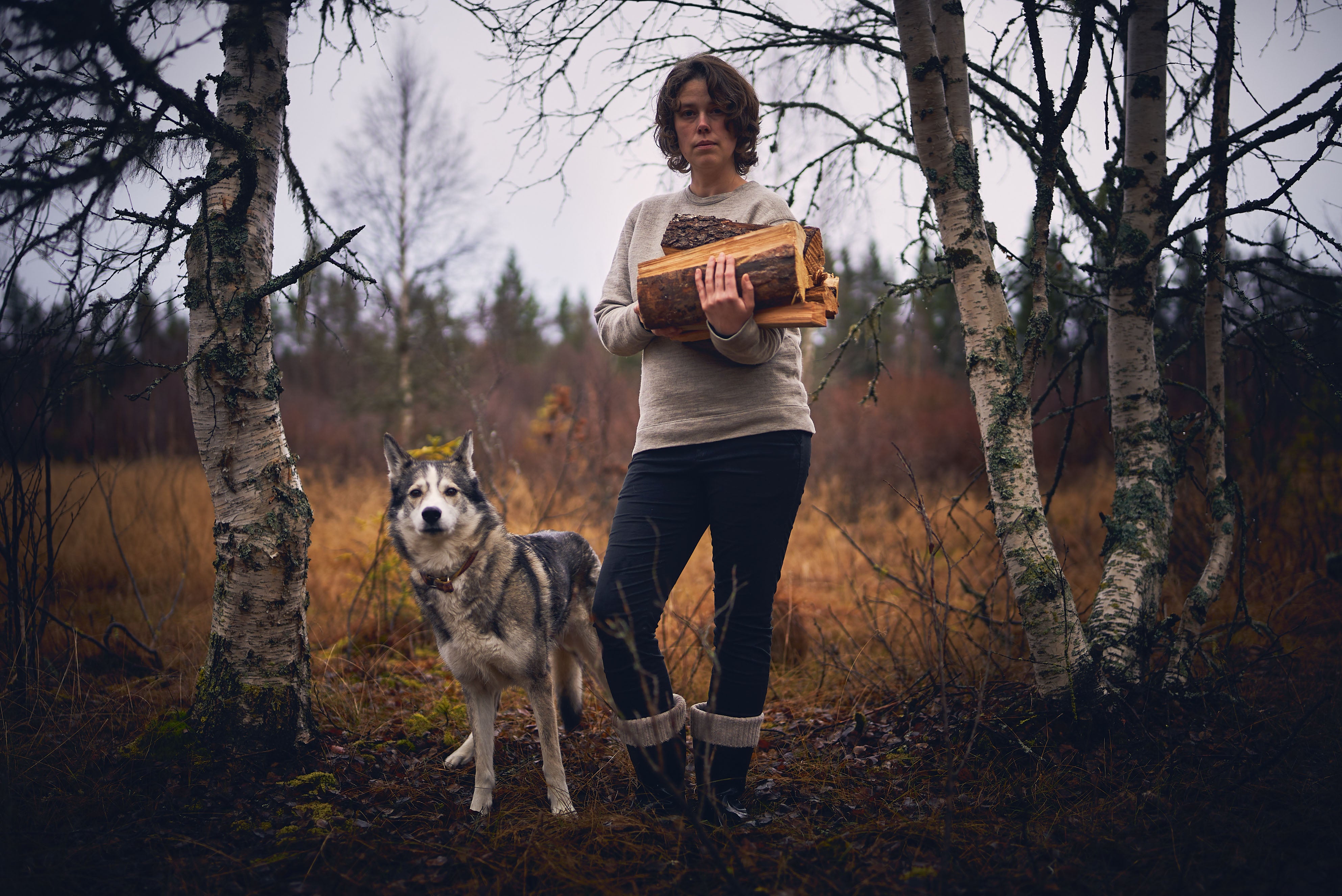Please rotate your phone to portrait orientation.
Please rotate your phone to portrait orientation.

Homesteading, or living self-sufficiently, is really doing things the hard way. Mathias and Tova began their journey into self-sufficiency by renovating a “fäbod”, or an old wood cottage, in the Jämtland forest in 2012. They have been documenting their lives on the land with a wildly successful YouTube channel. Mathias spoke to A NEW SWEDEN about the challenges of becoming self-sufficient and why it’s important to preserve local heritage.

Tell us about how you ended up living in the forests of Jämtland.
Tova and I met at Bäckedal Folkhögskola (folk high school) where we were taking a course in practical archaeology. The course had us learn and apply pre-industrial methods to crafts such as woodworking, leather tanning and blacksmithing.
When we finished, we moved to the village where Tova grew up. We stayed at her parents for a while, until we renovated and moved into cottage we live in today.
We were only going to live in the cottage until we figured out what we wanted to do next. We spent time driving around looking at farms in Jämtland, but in the end we decided that we liked the cottage and stayed put.

Describe your cottage and how you live.
The old cottage we renovated is called Talasbuan, and we occupy the maid’s room that is about 15 square meters. There is a small village about 2 km away.
The room is enough for us, although now that our son Ivar is getting bigger, it is starting to feel cramped.
There is an unplumbed loo around the corner. Until we build a sauna, we shower in the village during the winter. We are doing our laundry in the village until we can find a solution for the cottage. Laundry is the trickiest problem to solve, unless one does it by hand.
Having a village close by lets us take our journey slowly. We have time to think about what really works and approach it in a measured way.
We’ve lost so much knowledge of how we used to do things
We’ve lost so much knowledge of how we used to do things. We have to learn these skills again, and it takes time.
If we had been dogmatic about self-sufficiency from the beginning, I don’t think we would have continued.
A little at a time is probably smart.

Is the plan to be completely self-sufficient?
We are working on it, but as I mentioned, we are not in a hurry.
We are slowly building up our place, expanding the homestead with chickens and other things. Maybe we can become self-sufficient soon, but there are a lot of things we would have to work on to become completely self-sufficient.
The hardest thing to solve is a sustainable way to feed the animals during winter. Otherwise everything is working well the way we have it now, and it feels good not to have to stress about how things “should” be done.

What animals do you have?
We have Helsinge sheep and Bjurholm chickens, both in the gene bank. We had Gotland rabbits in the beginning, but came to the conclusion that rabbits weren’t for us. In the future, we hope to have mountain cows to give us dairy. We also have cats and dogs. We dream about having Northern Swedish workhorses.Preserving old native breeds is important to us. Native breeds may not be the “most productive” when comes to the meat or wool or other reasons why one might keep animals. But they are traditional breeds and better suited for the country we live in. They get sick less often and can handle the climate better.
What have been the most difficult challenges?
There is a challenge every day. Sometimes it is something personal that you are going through, sometimes it’s an issue with the farm. Animals will get sick and die. Things will break. Trees will fall in the worst places. The car will fail to start.There’s a saying, when one problem is solved, the next one comes knocking. That saying is the reality for us. But we’ve learnt that it’s not how you feel about it, but how you handle it.
—När en sak löser sig sả kommer nästa och knackar pả
What is the best thing about living the way you do?
There are so many things.Being resilient. Being able to fix things yourself, and being able to leave the house without anything in it freezing and breaking.To know that we will always have heat in the winter. To know we’ll always have food to eat. To not have to depend on shops and other delicate systems that may not be reliable in these strange times.Not having a bunch of electronics buzzing and making noise. Being able to step out the door and be in the woods. To be in close proximity to the Earth, the forest and the place where we live. To be able to produce our own food and know exactly what we are putting into ourselves.

What can you advise others who want to live in a similar way?
—AS TOLD TO LISA BERGSTRAND / A NEW SWEDEN, 2022
Mathias wears the Jämtand hoodie. Tova wears the Findor All-weather Jacket and the Jämtland Sweatshirt. Ivar wears items from his own wardrobe.
Follow their journey on YouTube or their blog.
